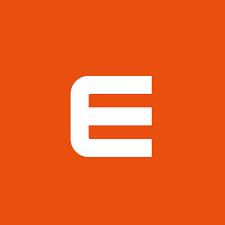USB Cable Standards
USB Cable Standards
Connectivity can be confusing, especially with the constant evolution of USB standards. This article provides a comprehensive guide to USB cable standards, exploring the latest USB versions, various data cable types, and crucial aspects of USB cable construction and specifications. From understanding different USB standards to deciphering USB cable specs, we'll cover everything you need to know about modern data cables.
Key Takeaways
Key Takeaways
- USB is more than just different shaped connectors; it encompasses evolving standards that define data transfer speeds and power delivery. Speeds have increased dramatically, from the early days of USB 1.0 (12 Mbps) to the latest USB4 v2.0 (80 Gbps).
- It's important to distinguish between connector types (the physical shape of the plug, like USB-A, USB-C, Micro-USB) and USB standards (the technology that governs speed and power, like USB 3.2 Gen 2 or USB4). A common misconception is that the connector type dictates speed, but it's the underlying USB standard that matters. A USB-C port, for example, can support a range of speeds depending on the standard it implements.
- Modern USB cables incorporate advanced features like USB Power Delivery (USB PD) for fast charging, DisplayPort Alternate Mode for video output, and robust shielding for signal integrity.
- Cable construction, including materials and design, plays a crucial role in performance and durability.
- We design our own Type-C data cables.

USB Data Transfer Speeds: From USB 2.0 to USB4 v2.0 (80 Gbps)
USB Data Transfer Speeds: From USB 2.0 to USB4 v2.0 (80 Gbps)
- USB 2.0: Primarily used for basic peripherals like mice and keyboards. Offers a maximum data transfer rate of 480 Mbps (megabits per second). While this might sound like a lot, it's enough to transfer a typical song in a few seconds. Still relevant for low-bandwidth devices.
- USB 3.2 Gen 1 (formerly USB 3.0 and USB 3.1 Gen 1): Offers significantly faster data transfer speeds at 5 Gbps (gigabits per second). This is about ten times faster than USB 2.0 and can transfer a full HD movie in under a minute. Commonly found on older devices and some newer budget-friendly options.
- USB 3.2 Gen 2 (formerly USB 3.1 Gen 2): Doubles the speed of Gen 1 to 10 Gbps. At this speed, you could transfer a large video file or a backup of your entire phone in just a few seconds. Supports higher bandwidth applications like external SSDs (Solid State Drives).
- USB 3.2 Gen 2x2: Achieves speeds up to 20 Gbps by using two lanes of 10 Gbps. This is incredibly fast and allows for near-instantaneous transfer of very large files, like 4K videos or large game installations. Requires USB-C connectors and compatible devices.
- USB4: Based on the Thunderbolt protocol, offering speeds up to 40 Gbps. Imagine transferring an entire Blu-ray disc in just a few seconds. Uses USB-C connectors and supports DisplayPort Alternate Mode for video output, allowing you to connect high-resolution displays. Backwards compatible with some USB 3.2 devices.
- USB4 v2.0: Doubles the bandwidth of USB4 to a staggering 80 Gbps. This level of speed is designed for future technologies that require massive data throughput, like advanced virtual reality or extremely high-resolution video editing. Maintains compatibility with previous USB4 and Thunderbolt 3 devices.
Understanding Connector Types and USB Standards
Understanding Connector Types and USB Standards
- Connector Type: Connector Type: While the standard defines the data transfer and power capabilities, the connector type determines physical compatibility. Common USB connector types include USB-A, USB-B (and its smaller variants, Mini-USB and Micro-USB), and USB-C. USB-C is rapidly becoming the dominant connector due to its versatility, support for higher speeds and power delivery, and reversible design. While older types like USB-A and Micro-USB are still found on many devices, USB-C is the future of USB connectivity. While USB-C is often associated with newer, faster standards like USB 3.2 or USB4, a USB-C port doesn't guarantee those speeds. It could also use older USB standards like USB 2.0. To know the actual data transfer speed and capabilities, you need to check the device or cable specifications for the specific USB standard (e.g., USB 3.2 Gen 2, USB4) it supports.
- Power Delivery (USB PD): This specification allows for higher power charging. It goes up to 240W. While the standard technically allows for this, it's not widely implemented yet as of 2025, and most devices and chargers are still at 100W or below. It enables faster charging of laptops, tablets, and other power-hungry devices. It's often associated with USB-C.
- Marketing Names vs. Technical Specifications: The USB Implementers Forum (USB-IF) has changed the naming conventions several times, leading to confusion. Using the technical names (e.g., USB 3.2 Gen 1) alongside the more common marketing names (e.g., USB 3.0) can help clarify things.
Other Widespread Data Cable Types
Other Widespread Data Cable Types
Beyond USB, several other important connectivity standards exist. HDMI remains the standard for connecting TVs, monitors, and other multimedia devices. Ethernet provides reliable wired network connections. DisplayPort is commonly used for connecting computers to high-resolution displays, often offering higher refresh rates than HDMI. Thunderbolt, which shares the USB-C connector, offers extremely high data transfer speeds and versatile connectivity options, often used for external storage and docks. For more detailed information on these technologies, we recommend exploring resources such as HDMI.org, IEEE.org (for Ethernet), VESA.org (for DisplayPort), and Intel's Thunderbolt page.
Key Features of Modern USB Cables: High-Speed Data, Fast Charging, and More
Key Features of Modern USB Cables: High-Speed Data, Fast Charging, and More
Modern USB cables are complex pieces of technology designed for more than just basic data transfer. They incorporate features such as:
- High-speed data transfer: Supporting standards like USB 3.2, USB4, and Thunderbolt.
- High-power charging: Utilizing USB Power Delivery (USB PD).
- Simultaneous data and video transmission: Particularly with USB-C and DisplayPort Alternate Mode.
- Robust shielding and construction: To minimize interference and ensure signal integrity.
- MagSafe: A magnetic charging solution that provides a safe and convenient connection. Worth mentioning that MagSafe is an Apple proprietary technology, not a standard feature of USB cables in general.
The Evolution of USB: Speed and Power
The Evolution of USB: Speed and Power
USB technology has undergone significant advancements since its inception, continually improving both data transfer speeds and charging capabilities.
- Early Days (USB 1.0 & 2.0): USB 1.0 (1996) offered a modest 12 Mbps, sufficient for basic peripherals. USB 2.0 (2000) significantly boosted speeds to 480 Mbps, enabling more practical file transfers. Charging capabilities were limited to around 2.5W.
- The Rise of Speed (USB 3.0/3.1/3.2 Gen 1 & 2): USB 3.0 (2008) brought a tenfold increase to 5 Gbps, later refined as USB 3.1 Gen 1 and then USB 3.2 Gen 1. USB 3.2 Gen 2 doubled that to 10 Gbps. These generations also saw improvements in power delivery, though USB Power Delivery (USB PD) was still emerging.
- USB-C and Power Delivery (USB 3.2 Gen 2x2, USB4, USB4 v2.0): The introduction of USB-C and USB PD marked a major shift. USB 3.2 Gen 2x2 achieved 20 Gbps. USB4 (based on Thunderbolt) reached 40 Gbps, and USB4 v2.0 doubled that again to 80 Gbps. USB PD enabled significantly higher power delivery, up to 100W initially and with potential for up to 240W in future implementations, allowing for fast charging of laptops and other high-power devices.
How Data Cable Construction Affects Performance
How Data Cable Construction Affects Performance
A cable's materials and construction are crucial for maintaining signal integrity and ensuring reliable data transfer. Factors like shielding (to minimize electromagnetic interference), conductor material (like highly conductive copper), and precise cable geometry directly impact performance, especially over longer distances. At Evelatus, we prioritize these aspects by using high-quality copper conductors, robust connector designs with gold plating for corrosion resistance, and durable outer materials like braided nylon for enhanced shielding and longevity. Our rigorous testing ensures reliable performance and long-lasting durability.
Our Rigorous Testing Ensures Reliable Performance and Long-Lasting Durability
Our Rigorous Testing Ensures Reliable Performance and Long-Lasting Durability
At Evelatus, we prioritize material selection and construction techniques to ensure reliable cable performance. We use copper conductors for their high conductivity, which minimizes signal loss. Our connector designs focus on robust construction to ensure a secure connection and minimize wear. 1 We also utilize gold plating on connector contacts to improve durability and corrosion resistance. Adhering to established industry standards, such as those defined by the USB Implementers Forum (USB-IF), is a key part of our design and testing process to ensure compatibility across a wide range of devices. Features like right-angle connectors and status LEDs are incorporated where appropriate to enhance usability.
FAQ
FAQ
- Question:How do different USB standards affect data transfer speeds?Answer:USB standards directly determine the maximum data transfer speeds a cable and connected devices can achieve. Newer standards like USB 3.2 Gen 2 and USB4 offer significantly faster transfer rates compared to older standards like USB 2.0.
- Question:What are the key differences between various USB standards (e.g., USB 2.0, 3.2 Gen 1, 3.2 Gen 2, USB4)?Answer:Each USB standard introduces improvements in data transfer speeds and sometimes power delivery capabilities. USB 2.0 offers basic speeds, while the USB 3.2 family (Gen 1, Gen 2, Gen 2x2) provides progressively faster transfer rates. USB4, based on Thunderbolt technology, offers the highest speeds currently available.
- Question:How do I identify which USB standard a cable supports?Answer:The cable's packaging or documentation should clearly state the supported USB standard. The connector type (USB-A, USB-C) does not solely determine the standard. Be aware that marketing terms like 'SuperSpeed USB' and 'SuperSpeed+' can be confusing. These often refer to older USB 3.x standards. Always look for the official designations like USB 3.2 Gen 1 or USB 3.2 Gen 2.
- Question:Do cable length and quality impact performance within a given USB standard?Answer:Yes, cable length and quality can affect performance. Longer cables, especially poorly made ones, can experience signal degradation, which reduces data transfer speeds. Using high-quality cables is recommended to maintain optimal performance.
- Question:What is the standard connector type to be incorporated into devices as of 2025?Answer:USB-C is becoming the standard connector type for devices as of 2025, driven by its versatility for data transfer, power delivery, and video output, as well as regulatory pushes like the EU mandate.
To Summarize the Above
To Summarize the Above
This article has provided a comprehensive overview of USB standards, outlining their evolution and key characteristics. We began with USB 2.0, sufficient for basic peripherals at 480 Mbps. We then examined the significant speed increases offered by the USB 3.2 family: Gen 1 (5 Gbps), Gen 2 (10 Gbps), and Gen 2x2 (20 Gbps). Finally, we explored the latest advancements in USB technology with USB4 (40 Gbps), based on Thunderbolt, and its even faster successor, USB4 v2.0 (80 Gbps). By understanding these specifications and their corresponding speeds, you can make informed decisions when choosing cables and devices for optimal performance.
Do you find this article useful? You might also like this one: What Strengthened Glass Display Protectors Are Made of?
Do you find this article useful? You might also like this one: What Strengthened Glass Display Protectors Are Made of?
Wholesale Pricing for B2B
Order our products directly from our warehouse in China.

We won’t spam you; we’ll only occasionally send you information about our new products.

Written by Evelatus in 2025







